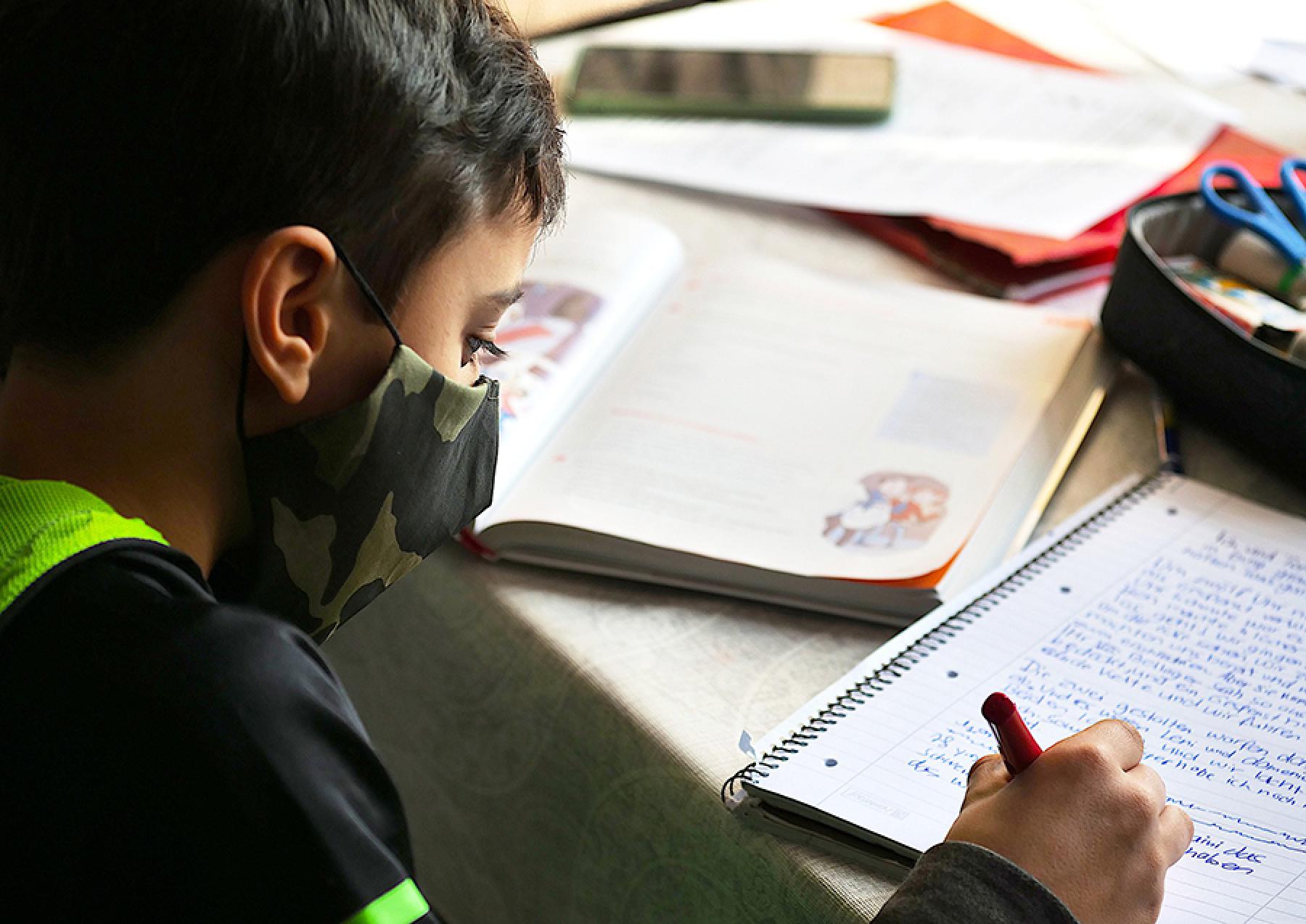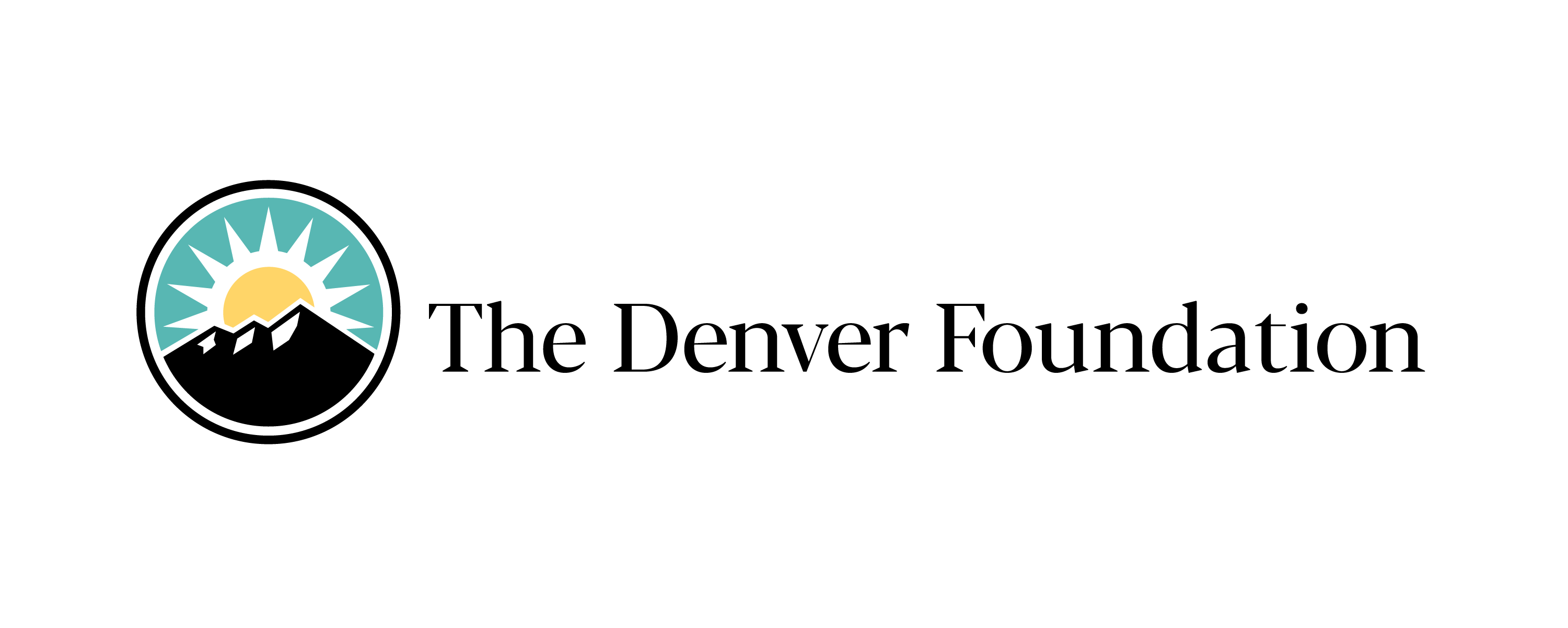Colorado Education Leaders Offer Ways to Recover from COVID Learning Loss

This week marks the beginning of summer break for many of Colorado’s nearly 900,000 K-12 students.
During the year, children have had to cope with remote or hybrid learning, quarantines, and the loss of face-to-face contact with their friends and teachers. The toll on their academic progress and mental health is already apparent. Just this week, Children's Hospital Colorado declared a "state of emergency" for youth mental health. When more data from the current school year become available, we will be able to quantify the pandemic’s cost to students.
Early studies are alarming. McKinsey & Company found students started the 2020-21 school year behind in math, after the pandemic cut short the 2020 spring semester. Racial inequities worsened. White students were one to three months behind, while students of color were three to five months behind. Nationwide, students of color were more likely to lack internet access or computers, and they were twice as likely to have no in-person interaction with teachers, either in-person or online.
“Our systems have not historically been designed to catch kids up once they are behind, so the reason for concern is real,” said Rebecca Holmes, President and CEO of the Colorado Education Initiative.
The problem is systemic, but so far we have seen little in the way of systemwide plans for summer school, extended school days, or other ideas. One effort that stands out is House Bill 1234 by Rep. Kerry Tipper (D-Lakewood) and others, which would create a high-impact tutoring program.
The Colorado Health Institute asked six Colorado education leaders what the state needs in policy and leadership to help our students recover from the year of COVID-19. Here are their thoughts.
Seize the opportunity of federal aid
State Rep. Kerry Tipper, D-Lakewood
The dramatic interruptions to in-person learning have exacerbated inequities long entrenched in our educational system. As we emerge from this pandemic, it is our responsibility not just to return to where we were before, but to rethink our educational system in order to ensure equity and opportunity for every child. The impending influx of historic federal dollars provides us the means to do just that. Examples of this include: 1) funding school district efforts to implement successful interventions such as high-impact tutoring or small-group instruction; 2) extending the length of the school day (and in some districts, school week); 3) reconsidering the traditional school year to maximize student learning every month of the year; and 4) reimagining the role and import of fostering emotional intelligence and supporting mental health.
Check our assumptions
Rebecca Holmes, President and CEO, Colorado Education Initiative
Certainly, in places where virtual instruction went on for multiple weeks at a time, it is appropriate to assume increased academic and social development gaps. However, we must do two crucial things as an education ecosystem before building interventions to address learning loss: 1) Avoid the tyranny of a single story, and 2) Check any bias-driven assumptions we have about families and communities against real data, both quantitative and qualitative. Early data suggests some gaps, particularly in lower grades reading and middle grades math. Older students who were not particularly engaged in school pre-COVID, or who were balancing the demands of work with school, may be facing a staggering number of “failed” courses. Our systems have not historically been designed to catch kids up once they are behind, so the reason for concern is real. However, a tight framing of “learning loss” risks over-dialing on filling academic gaps when students may most need renewed social connection, positive relationships, and a chance to question and reimagine what may not have been working well before.
Additionally, for every story of struggle and increased deficit, there is a student who discovered a great deal about their own passions and interests, was freed from something that wasn’t working about how we used to “do school,” and a family who discovered that, for all its challenges, remote learning offered something that may have been missing before. And often, these contrasting stories exist now in the same family and even within a single child’s experience. Kids need adults to ask questions and listen, helping them scaffold their own reflections on what happened this year and what needs to happen next. Finally, adults in education systems simply must interrogate their biases as families come back into schools — or choose not to. My colleagues who do community work with families of color tell important stories about families having found relief in not struggling against a system that didn’t see the gifts of their children pre-COVID. And Black mothers in my own circle have shared real concerns about how their children’s behaviors in school may be received differently than those same behaviors from white classmates as children emerge from a challenging year. We have an enormous opportunity to use recovery to transform our education systems, but only if we rebuild from a place of authentic listening and relationship.
Vote to increase educational opportunities
Mike Johnston, President and CEO, Gary Community Investments
Even before the pandemic, the achievement gap between students of color and their white counterparts was cause for great concern in Colorado, and the academic disruptions from the past year have widened those gaps. As a former educator myself, I know teachers have gone to great lengths to make their physical and virtual classrooms spaces where all kids can reach their full potential. But the learning losses that students have suffered this year span beyond the classroom, and if we’re going to help students recover those losses, we’re going to have to look outside of the classroom as well.
That’s why Gary Community Investments worked with a variety of education experts and advocates to design the Learning Enrichment and Academic Progress (LEAP) Program ballot initiative. As the first statewide program of its kind in the country, LEAP will make Colorado a national leader in pioneering new strategies to help close the achievement gap for Colorado students of color and those from low-income households by providing additional out-of-school learning opportunities that all families can access. Funded by a phased-in sales tax increase on recreational marijuana, LEAP lets families leverage $1,500 per child worth of funding to pay for supplemental learning activities to help kids leap ahead. Families can take advantage of tutors, summer camps, services for special needs students, career and technical education training programs, and other enrichment activities to support their students’ learning and development. If passed by voters in November, families would be able to access services as early as 2022.
We know that even before COVID, kids from low-income homes trailed two years behind their wealthier peers by the time they reached fifth grade. The fact is, wealthier families have the means to access additional learning opportunities after school and during the summer. The learning gaps exacerbated by COVID will not go away with the virus, and if we are to ever close them completely, we will need to provide all students equitable access to the out-of-school learning opportunities proven to help them thrive.
Get the state’s fiscal act together
Lisa Weil, Executive Director, Great Education Colorado
It's more important now than it has ever been for teachers and schools to be able to meet every student where they are — in terms of academics, physical and mental health, and social well-being. That's always been an extreme challenge with Colorado's chronically poor school funding over the past three decades. It's a great relief that federal COVID recovery dollars will allow districts to make headway in addressing at least some of the unique needs of different student populations now, but if Colorado doesn't use the next two years to get its fiscal act together to create more equitable and sustainable funding for schools, we'll fall off a fiscal cliff when the federal dollars end, leaving kids in the lurch once again.
Take a whole-child approach
Colleen Church, Chief Strategy Officer and Vice President of Philanthropy, Caring for Colorado Foundation
Our purpose at Caring for Colorado Foundation is to create equity in health, well-being, and opportunity for Colorado’s children and families. Data and the voices of our fellow Coloradans show that Black, Brown, and Indigenous children and youth, and their families, have been deeply affected by the direct and secondary impacts of the pandemic, and we have a responsibility — an imperative — to support them in healing and gaining a sense of well-being, safety, and stability as we emerge from this acute phase. So many kids have experienced disruption, trauma, frustration, and disengagement. Moving forward, we must center equity and a whole-child approach for younger kids and adolescents. Investments and programming should reflect the voices of those they are intending to benefit. We must prioritize social and emotional supports and mental health treatment, when needed. We need environments that create time and space for reflection, connection, play, and a sense of possibility, in addition to academic learning. We need to pay attention to the people who care for our kids — teachers, child care providers, community and neighborhood organization staff — and make sure they’re getting the supports they need to be emotionally available to fulfill their roles. And we need to make sure the many supports moving forward through federal and state funds are truly addressing the economic and basic needs of families, thereby reducing their stress. There’s no easy fix, but with concerted and sustained effort, we can ensure the well-being of this generation of Colorado’s kids.
Above all, address poverty
Lea Steed, Director of Equity Matters, Great Education Colorado and Chair of the Education Committee of the NAACP – Aurora Branch
We have yet to make good on the promises of the ’50s and ’60s — Brown v. Board of Education, the Civil Rights, Voting Rights, and Fair Housing acts — so equitable recovery from COVID will not be easy. Here are a few recommendations: hire and support BIPOC teachers, invest in teachers by paying a livable wage, decrease class sizes (it’s difficult to teach a class of 30 students), provide quality tutoring programs to help students get caught up and stay caught up, pause testing, and, most fundamentally, eliminate poverty.
Many of us know the statistics when it comes to the achievement or opportunity gap of BIPOC students. The most unsettling is: if a child is not able to read by third grade, they are most likely not to graduate from high school and will struggle financially through their adult years, perpetuating generations of poverty. There are over 16 million children living below the poverty level, with COVID increasing that number. We know the implications of poverty — food insecurity, homelessness, inadequate child care, lack of access to health care, unsafe neighborhoods, under-resourced schools, and unsafe neighborhoods. When a student encounters any of these issues, that child’s ability to succeed in school is interrupted, if not halted. We can and must work to close the achievement and opportunity gaps, we can and must work to stop the education loss during the pandemic, and we can and must work to increase teacher pay; however, if we are not paying attention to the issues of poverty — we are fighting an uphill battle.
CHI does not take a position on the policies mentioned by contributors to this post. Our intent is to further the conversation on leadership and policies needed to help the hundreds of thousands of young Coloradans who have just endured a strange and difficult school year.
Related Blogs and Research
- Colorado State Budget Has Dollars to Spare
- Teaching Together: Supporting Colorado’s Educators Through the Pandemic
- School, Risk, and an Age of Uncertainty
CHI's work on rapid analysis of current policy challenges is made possible by The Denver Foundation.


